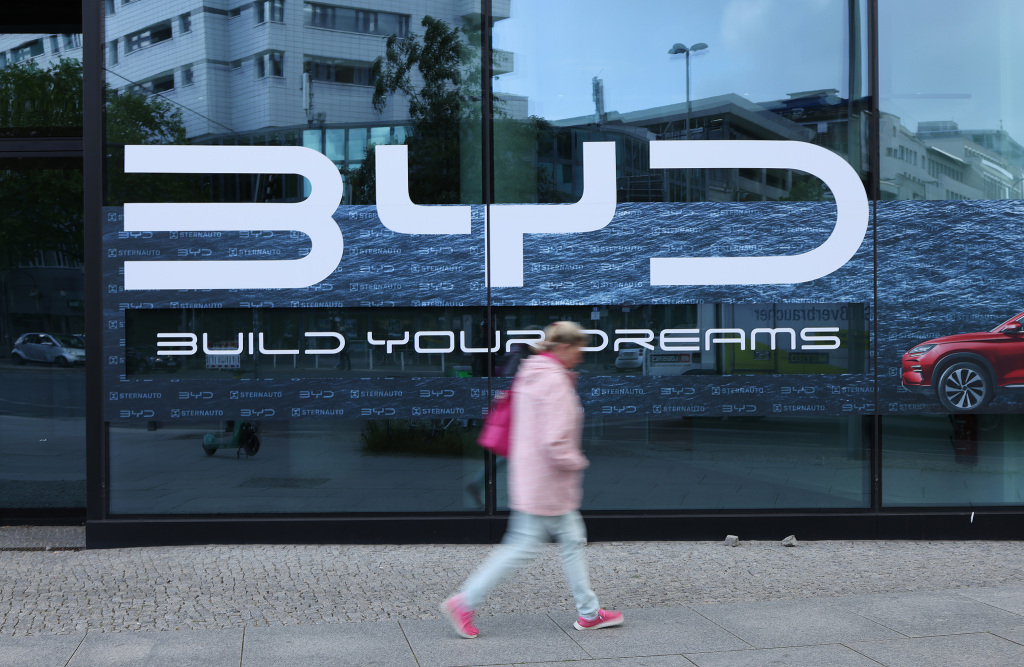
The price war in China's auto market has intensified again, triggering further concerns about the risk of an industry reshuffle.
On May 27, BYD, a leading Chinese new energy vehicle company, announced a new round of price cuts for 22 models. Among them, the starting price of the entry-level pure electric sedan Seagull was reduced from nearly RMB 70,000 to RMB 55,800, a drop of 20%.
Subsequently, Geely, Leapmotor, Chery and other automakers also joined the battle through car buying festivals. The three-year price war has caused most companies to fall into a vicious cycle of "losing money on every car sold". At present, in order to achieve aggressive sales targets, Wei Jianjun, chairman of Great Wall Motors, revealed that "zero-kilometer used cars" have further aggravated market disorder and harmed consumer rights.
What is even more alarming is that the price war is spreading from vehicle manufacturing to the upstream supply chain. The continuous price cuts by OEMs have caused some parts suppliers to be on the verge of bankruptcy, and the sustainability of the entire industry chain is facing severe challenges.
The structural contradictions in China's auto market have reached a critical point. According to data from consulting firm Jato Dynamics, among the 169 currently active automakers, more than half have a market share of less than 0.1%.
This latest wave of price wars has triggered strong expectations of restructuring the industry. Tu Le, managing director of Sino Auto Insights, an industry consulting firm, pointed out: "This may become the first domino to crush weak companies. New forces that are still struggling on the edge of losses may face a life-or-death test." However, Michael Dunne, a senior consultant who has been tracking the Chinese auto industry for a long time, said: "BYD's price cuts will indeed eliminate weak companies, but every time a company is eliminated, there are always technology giants such as Xiaomi and Huawei entering the market with huge funds." This unique cycle of "one company exits and one company replaces" has led to an increase in the number of Chinese auto brands.
In fact, price wars are nothing new to the modern automobile industry, which has existed for 137 years. Therefore, when faced with questions such as "where to go" and "where to go", looking back at history can always help us find the direction to move forward.
In the United States, in 1913, Henry Ford launched the world's first mobile assembly line at the Highland Park plant in Detroit, reducing the production time of the Model T from 12.5 hours to 9 minutes. This industrial revolution directly pushed the price of the Model T from $850 to $290, creating the myth of "buying a car for $290". By 1921, Ford occupied 57% of the market share in the United States.
But the hidden danger of over-reliance on a single model had already been quietly buried - when General Motors launched the Chevrolet 490 with a colored body and a closed cockpit, the Ford empire that had stuck to the "black Model T" began to collapse.
In 1927, General Motors, headed by Alfred Sloan, launched a multi-brand matrix strategy. Cadillac anchored the luxury market, Chevrolet focused on the masses, and Buick and Oldsmobile filled the gap in the mid-range. This precise positioning strategy, combined with the innovative mechanism of annual model changes, enabled General Motors to surpass Ford and become the industry leader in 1931.
In 1975, the first oil crisis hit the US auto market hard, and Chrysler took the lead in launching cash discounts of $200-600. In an era dominated by large cars, Chrysler's K-type car broke through the trend with its front-engine, front-wheel drive layout and fuel economy.
In Europe, the European debt crisis swept through in 2013. The average discount per vehicle of PSA Group in five European countries reached 3,013 euros, and Opel, a subsidiary of GM, became the pioneer of price reduction with a discount of 3,301 euros per vehicle. Behind the surge in sales was the abnormal operation of dealers selling new cars as used cars. Although this price war alleviated the overcapacity, it dealt a heavy blow to the premium ability of European brands. In contrast, the popularity of "zero-kilometer used cars" in China has been doomed to a certain extent.
In Japan, in 1955, the Ministry of International Trade and Industry launched the "National Car" plan, requiring automakers to develop mini cars with a price of less than 250,000 yen and a fuel consumption of 30km/L (about 3.3 liters per 100 kilometers). Toyota Publica came into being, and through mass production, the price was reduced to 360,000 yen. Although it failed to meet the standard, it started a cost-effective revolution in the Japanese automobile industry. By 1965, the proportion of personal car ownership in Japan jumped from 25.2% to 54.5%.
In 1970, the first generation of Crown entered the US market as a "Detroit-style car" with optimized seat size and increased legroom for the American body. Toyota's original "dynamic quality control" system reduced the failure rate per 100 vehicles (PP100) from 4.5 to 1.3. When the Beetle was still using an air-cooled engine, the Crown was equipped with an automatic transmission and air conditioning system, breaking the price war dilemma with a technology premium.
In South Korea, in 2000, facing the saturation of the domestic demand market, Hyundai Motor launched a trade-in program, offering a 100,000 won subsidy for replacing an Accent with an old car that was used for more than five years, and a 300,000 won subsidy for a Sonata. Ssangyong Motor offered a 1 million won discount to old car owners for repurchase. This price war caused the average profit margin of the Korean auto industry to fall to a historical low, but it forced Hyundai Motor to develop the world's first θ series engine, which is far ahead in combustion efficiency.
Right now, Chinese car brands are still struggling to expand into the global market amid fierce competition, and the situation is even more complicated.
Our automobile industry has a very good cost-effectiveness advantage due to the improvement of the maturity of the industrial chain, but it is also stuck in the quagmire of price wars due to problems such as the high homogeneity of design and technology.
What is even more worrying is that when price cutting and tribute become the main means of competition in the industry, the momentum of technological innovation in the industry will be severely weakened.
On May 20, Li Chao, deputy director of the Policy Research Office of the National Development and Reform Commission and spokesperson of the Commission, pointed out at a press conference that the rectification of "involutionary" competition is a matter of great concern to everyone. At present, some companies have fallen into "involutionary" competition, breaking the boundaries and bottom line of market competition, distorting the market mechanism, and disrupting the fair competition order, which must be rectified.
Li Chao said that the National Development and Reform Commission, together with relevant parties, has targeted the crux of the problem, formulated policies and measures based on the industry, and prescribed the right remedies to resolve the structural contradictions in key industries by addressing both the symptoms and the root causes, so as to promote the healthy development of the industry and improve its quality and upgrade.
Under the current complex situation, we believe that in addition to price cuts, Chinese automakers should find other ways out.
From the assembly line innovation of Ford Model T to Tesla's pioneering of automotive OTA, the history of price wars in the automotive industry is always accompanied by a history of technological evolution. History has proven that passive price wars will damage the health of the industry, but automakers that are inspired by this and actively seek change in technological innovation can always "survive from desperate situations" and usher in new glory through accurate insights into consumer demand.


